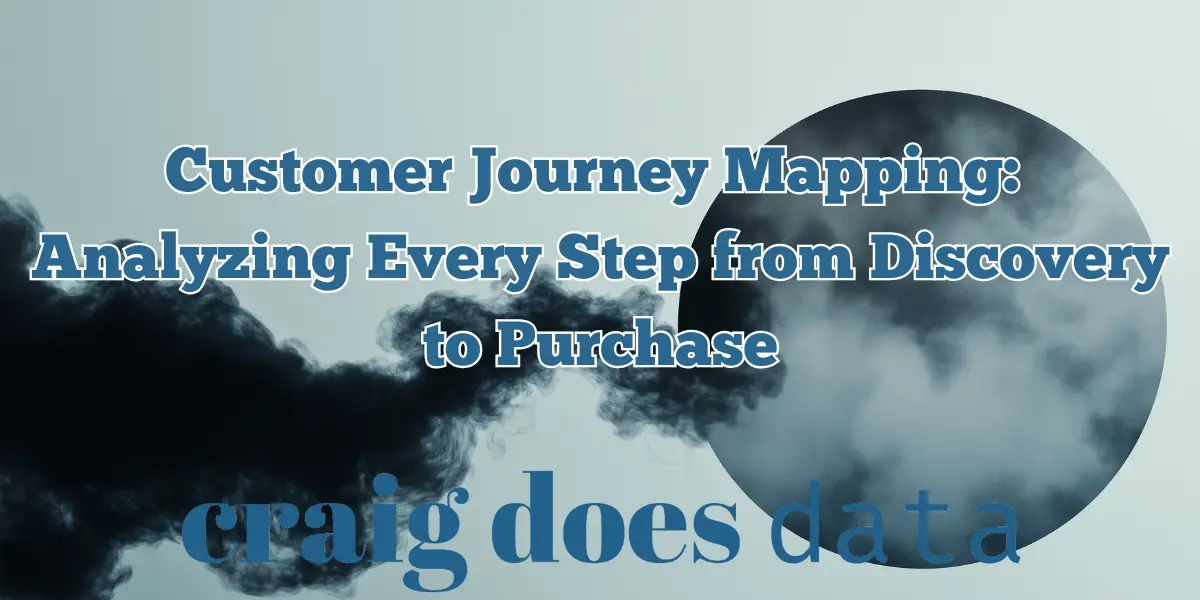
Customer Journey Mapping: Analyzing Every Step from Discovery to Purchase
In a marketplace saturated with brands fighting for customer attention, understanding the journey that prospects take before they become customers—and beyond—is more critical than ever. Customer journey mapping is a strategic approach that aims to meticulously document every interaction, emotion, and touchpoint that your customers encounter on their path toward engaging with your products or services. By piecing together these interactions into a cohesive narrative, businesses can uncover hidden opportunities for improvement, streamline complex processes, and ultimately create an experience that resonates with their audience.
The beauty of customer journey mapping lies in its ability to go beyond raw data points and delve into the motivations, pain points, and emotional states of the people you're aiming to serve. When done effectively, this map becomes a powerful visualization of the customer’s perspective, helping teams across different departments—marketing, sales, product development, and customer service—align on a single vision of the customer experience. In today’s hyper-connected environment, where a single negative review can go viral within hours, it’s essential to address issues proactively by identifying them early in the customer journey.
By integrating data from multiple channels—social media, web analytics, customer surveys, and more— businesses gain a 360-degree view of how customers discover, evaluate, and decide on products. Moreover, a well-executed customer journey map doesn’t stop after the point of purchase; it extends into the post-purchase phase, where loyalty and advocacy are nurtured. This holistic understanding transforms reactive customer service approaches into proactive strategies, allowing brands to anticipate and exceed customer expectations. The result is not just an uptick in sales, but a meaningful, long-lasting relationship with customers who feel truly understood and valued.
In the sections that follow, we will explore the concept of customer journey mapping in depth. You’ll learn about its definition, the pivotal stages that constitute a typical customer journey, and how to effectively create and leverage a journey map in your business. Whether you’re a seasoned marketer looking for fresh insights or a newcomer eager to learn the ropes, this article will equip you with a clear roadmap to analyze and optimize every step from initial discovery to the point of purchase—and well beyond.
What is Customer Journey Mapping?

Customer journey mapping is a strategic visualization technique that captures the full spectrum of a customer’s experience as they interact with a brand. It compiles every interaction—both online and offline—from the moment they first become aware of a product or service, to the time they decide to make a purchase, and even through the post-purchase process. By plotting these interactions on a visual map, businesses can better understand where customers encounter friction, confusion, or delight.
At its core, a customer journey map incorporates a variety of data sources, such as website analytics, social media engagement metrics, survey feedback, and customer support logs. The end result is a comprehensive overview that clarifies how individuals move from one touchpoint to the next, highlighting pivotal decision moments and emotional triggers. This insight is invaluable for any brand looking to create a cohesive and personalized customer experience. Whether you run a small e-commerce store or manage a global corporation, the principles of journey mapping can be tailored to fit your scale and scope.
Visualizing customer interactions in this way is more than just an exercise in design; it’s a diagnostic tool. By laying out the journey, you can spot inefficiencies and inconsistencies in service delivery. Perhaps potential buyers on desktop abandon their shopping carts at an unusually high rate; maybe there’s a dip in satisfaction after the initial onboarding period. A well-constructed journey map pinpoints these issues, enabling you to take targeted, data-driven actions to resolve them. Additionally, journey mapping can shine a spotlight on your competitive advantage by revealing what aspects of your customer experience are most valued by your audience. Instead of making assumptions about what customers want, a journey map ensures you’re acting on real insights, positioning your brand to respond quickly and effectively to ever-changing consumer demands.
Ultimately, customer journey mapping is about seeing through the eyes of your audience. This holistic perspective allows businesses to design better experiences, strengthen brand perception, and foster loyalty. When executed effectively, it aligns teams behind a unified vision and empowers companies to deliver consistent value at every stage of the customer’s lifecycle.
The Stages of Customer Journey Mapping

Discovery Phase
The first stage of the customer journey is the Discovery Phase. This is when potential customers learn about your brand or product for the very first time—often through marketing campaigns, advertisements, social media mentions, or word of mouth. In today’s digital age, discovery can also come from search engines, influencer endorsements, or even offline events like trade shows and community gatherings. Marketing and advertising initiatives play a crucial role here, aiming to capture attention and build initial awareness. The goal in this phase is not necessarily to drive immediate sales but to pique curiosity and create a memorable first impression.
Think of the Discovery Phase as a window of opportunity to showcase your brand’s unique value. Whether you’re using pay-per-click ads, social media campaigns, or traditional print advertisements, consistency in messaging and branding ensures that prospects recognize and remember you. This phase is also where potential customers start forming emotional reactions—excitement, intrigue, or skepticism—based on how well your marketing resonates with their needs or aspirations. For instance, a compelling Facebook ad featuring customer testimonials can immediately establish credibility, whereas a poorly targeted ad might be dismissed as irrelevant. Understanding the emotional impact you’re making at this stage helps inform future marketing strategies, ensuring you continue to refine your reach and approach.
Consideration Phase
Once individuals are aware of your brand, they move into the Consideration Phase. Here, they begin to evaluate various options, comparing your offerings with those of your competitors. This phase is where the quality and clarity of the information you provide can either win or lose potential customers. In many cases, prospective buyers will read blog posts, watch product demos, browse FAQ pages, or scour reviews to determine whether your product or service aligns with their needs.
Providing valuable content is essential at this stage. Educational resources such as whitepapers, webinars, and how-to guides can position your brand as a trusted authority. Incorporating social proof via user reviews or case studies can also reassure prospects of your product’s value. The key is transparency: explain the benefits, be upfront about any limitations, and highlight unique selling points that set you apart from the competition. By giving potential customers all the information they need to make an educated decision, you reduce friction in the journey and build a foundation of trust.
Decision Phase
In the Decision Phase, customers are on the cusp of making a purchase. Factors such as price, brand reputation, and convenience heavily influence their final choice. This is also the moment when testimonials, reviews, and social proof carry the most weight. If you have a robust review strategy in place—encouraging satisfied customers to share their experiences—this can tip the scales in your favor. Similarly, transparent pricing and clear communication about product features can help alleviate any lingering doubts.
Social proof is particularly critical at this juncture. Whether it’s endorsements from industry experts, peer reviews on marketplaces like Amazon, or star ratings on review platforms, these can make a significant difference in how confidently a customer moves forward. You can also facilitate the decision by offering incentives like limited-time discounts, free shipping, or a risk-free trial. The aim is to reduce the perceived risk of purchasing and increase the perceived value, ensuring that when customers weigh their final options, your brand stands out as the optimal choice.
Purchase Phase
The Purchase Phase is where the transaction finally occurs. Even if a prospect is fully convinced that your product is the best option, a complicated or confusing checkout process can derail the conversion. Ensuring a seamless and user-friendly transaction is paramount. This may involve offering multiple payment methods, minimizing the number of steps required to complete a purchase, and maintaining clear, concise instructions throughout.
It’s also beneficial to reinforce the customer’s decision at the point of purchase. Post-checkout messages or confirmation emails that express gratitude and provide next steps—like shipping times or onboarding instructions—add a personal touch. Think of it as an opportunity to deepen the relationship, setting a positive tone for future interactions. Keep in mind that the ease of the purchase experience directly influences whether customers will feel satisfied enough to come back again or recommend your brand to others.
Post-Purchase Phase
The customer journey doesn’t end with a successful transaction. The Post-Purchase Phase is vital for turning first-time buyers into loyal patrons—and, eventually, brand advocates. After all, a single purchase can evolve into a lifetime of repeat business if handled correctly. Follow-up communication, such as personalized thank-you notes, surveys asking for feedback, or invitations to join a rewards program, can make customers feel valued and heard.
Customer service and support also become critical during this stage. Quick resolutions to issues, fast replies to inquiries, and proactive outreach regarding updates or product tips all contribute to a positive post-purchase experience. Additionally, strategies like loyalty programs, referral incentives, and exclusive access to new products encourage ongoing engagement. Nurturing these relationships can lead to customer advocacy, where satisfied buyers recommend your brand to friends, family, and social media circles—thereby fueling a new cycle of discovery for future customers.
How to Create an Effective Customer Journey Map

Building a robust customer journey map begins with comprehensive data collection. Before you can chart out the various stages and touchpoints, you need a clear understanding of who your customers are, what they desire, and how they currently interact with your brand. One approach is to conduct qualitative research such as interviews or focus groups. These methods let you delve deeper into the motivations behind customer decisions, unearthing nuances that raw data might overlook. Quantitative metrics—like website analytics, conversion rates, and social media engagement—complement this by providing concrete figures that highlight trends and areas of friction.
After gathering insights, segment your audience based on shared characteristics—such as age, location, or purchasing behavior—to create detailed customer personas. These personas act as fictional representatives of real customer groups, encapsulating their goals, fears, and pain points. When you build your journey map around these personas, it becomes easier to pinpoint at which stage they are likely to drop off, what marketing messages resonate most, and where they might need additional support. Remember, the more accurately you segment your audience, the more precisely you can tailor their journeys.
Next, start plotting each stage of the customer journey—from discovery to post-purchase—against relevant touchpoints and emotional states. Use tools like flowcharts or specialized software platforms designed for journey mapping. Many businesses find it helpful to involve multiple departments during this process. For instance, marketing teams can shed light on the effectiveness of campaigns in the Discovery Phase, while customer support can clarify common friction points in the Post-Purchase Phase. Collaboration ensures the final map reflects the actual experience customers are having, rather than an idealized version.
As you build the journey map, pay special attention to ‘moments of truth’—critical points where customers might either solidify their loyalty or walk away. These can include the initial website visit, product comparison, checkout process, and post-purchase support. For each of these moments, ask yourself: What is the emotional experience of the customer? What specific actions are they taking? What are their hesitations? By answering these questions, you can identify exact areas to enhance.
Finally, remember that a customer journey map isn’t a static document—it’s a living tool that should be revisited regularly. As consumer behaviors change and your business evolves, so too will the journey. Encourage a culture of continuous improvement by updating the map whenever you introduce new products, launch new campaigns, or detect shifts in customer preferences. This ongoing iterative process, backed by fresh data, ensures that your brand remains adaptive, customer-centric, and poised for sustained success.
Benefits of Customer Journey Mapping

One of the most compelling advantages of customer journey mapping is its capacity to personalize marketing efforts. By pinpointing exactly where and how customers engage with your brand, you can craft messages and offers that speak to their specific needs. For instance, if data indicates that a large portion of your audience discovers your brand through social media ads, you might focus on delivering highly targeted content there. On the other hand, if you find that a significant number of potential customers drop off during the checkout process, you can refine that experience to be smoother and more intuitive. This personalized approach not only boosts conversions but also fosters deeper connections with your audience, making them feel understood and valued.
Another critical benefit is the improvement in customer satisfaction and retention. A clear journey map reveals common pain points and bottlenecks that might frustrate customers. Addressing these issues proactively—whether it’s a confusing FAQ page or a lack of transparency in pricing—prevents negative experiences that can drive people away. By smoothing out these rough patches, you improve the overall user experience, creating a positive perception that encourages repeat business. In a marketplace where switching brands often takes only a few clicks, strong customer loyalty can be a decisive competitive advantage.
A well-designed customer journey map also aids in identifying inefficiencies across various internal processes. For example, you might discover that your marketing and sales teams have disjointed lead handoff procedures, causing delays and confusion. By visualizing the journey from end to end, these internal gaps become glaringly obvious, prompting more cohesive collaboration and resource allocation. Additionally, automating certain tasks—like sending targeted emails or segmenting audiences—can greatly reduce manual workload. The net effect is a smoother, more cost-effective operation that frees up your team to focus on strategic innovations and customer relationship-building.
Beyond direct business metrics, customer journey mapping can yield significant insights into broader market trends and consumer behaviors. You may notice that a particular product line is trending among younger demographics during the Consideration Phase, prompting you to align your marketing assets and distribution channels accordingly. Or, the map might highlight that a surprisingly high percentage of customers are discovering your brand via word-of-mouth referrals, which could inspire you to bolster referral programs and encourage reviews. This kind of awareness positions your brand to capitalize on emerging opportunities and react quickly to shifts in consumer preferences.
Ultimately, the benefits of customer journey mapping go beyond a single sale or conversion. By linking data-driven insights with genuine empathy for your customers’ needs, you create an environment that is both profitable and customer-centric. Every department, from marketing to product development, stands to gain from a shared understanding of the journey map. This cross-functional alignment forms the bedrock of delivering consistent, high-quality experiences that keep your customers returning again and again.
Challenges and Solutions in Customer Journey Mapping

While customer journey mapping offers immense value, it’s not without its challenges. One common hurdle is gathering reliable and sufficient data. If you rely solely on assumptions or incomplete analytics, your journey map can become skewed, leading to misguided strategic decisions. Solutions include diversifying data sources—collecting both qualitative and quantitative inputs—and regularly verifying data integrity. Engaging customers directly through surveys or focus groups ensures you understand their perspective, while analytics tools provide numbers to back up or challenge these perceptions.
Another challenge arises from siloed organizational structures, where departments operate in isolation. Marketing might focus primarily on lead generation, while customer support concentrates on ticket resolution, with minimal overlap between the two. This fragmentation can result in a journey map that doesn’t accurately capture the end-to-end customer experience. The solution involves creating cross-functional teams that collaborate throughout the journey mapping process. By ensuring that every department contributes insights and data, you develop a more holistic and accurate map. Regular inter-departmental check-ins and shared performance metrics also help maintain alignment over time.
Keeping the journey map updated is another significant obstacle. Customer preferences and market dynamics evolve rapidly; what was once a popular channel could become obsolete in a matter of months. Additionally, product updates, new service lines, or changes in the competitive landscape can alter the customer’s path. A static journey map that remains unchanged for long periods can quickly lose its relevance. To combat this, implement a periodic review process—quarterly or bi-annually—to assess whether your map still reflects the current reality. If significant changes are observed, revise the map accordingly.
Finally, there’s the issue of turning insights into action. Identifying pain points and opportunities is only half the battle; implementing effective solutions can be equally challenging. This is where stakeholder buy-in and strong project management come into play. Clearly communicate the value of addressing identified issues, set measurable goals, and track progress over time. When teams see how their actions—such as optimizing a checkout process or refining a marketing campaign—directly impact customer satisfaction and revenue, they’re more likely to stay committed to the improvements proposed by the journey map.
Conclusion
Customer journey mapping stands as a cornerstone in the modern business landscape, enabling companies of all sizes to understand and optimize every interaction that customers have with their brand. From the excitement of initial discovery to the rewarding sense of ongoing loyalty, each phase in the journey presents its own set of challenges and opportunities. By diving deep into customer behaviors, emotional responses, and the subtle nuances of every touchpoint, businesses can foster stronger relationships with their audience.
In an era where consumer expectations are higher than ever, journey mapping not only helps you stay competitive but also ensures you deliver genuine value. It breaks down departmental silos, encourages collaboration, and provides a clear roadmap for continuous improvement. Whether you’re a startup aiming to gain market traction or a well-established enterprise seeking to refine existing strategies, the principles explored in this article offer a solid foundation for crafting meaningful, customer-centric experiences.
What next?
We’d love to hear your perspectives on customer journey mapping. Have you implemented a map in your organization or discovered unique insights about your customers? Share your experiences and questions in the comments or reach out directly. To learn more about refining your customer’s path, explore the additional resources on our website—case studies, how-to guides, and in-depth articles—all designed to help you build a truly customer-focused business. Your journey to excellence starts with a single step: begin mapping today.
